Greetings, book-eaters and treat-makers! I’ve been slowly filling my garden with yarrow and bee balm and tulsi and sweet fern (my favorite). I’ve been transforming my porch into an oasis with pots of trailing nasturtiums and lots of basil and mint and two winterberries (my other favorite) that are going to make me gasp with joy in December. I’ve never been able to garden like this before and it is such a sweet gift.
Today’s newsletter requires no commentary. Queer friendship is sacred. Full stop. I will add that All This Could Be Different is an outrageously brilliant novel that I can’t stop thinking about, that I am head-over-heels in love with, that I don’t have enough exclamation points for. If you preorder books, preorder this one. Request it at your library now. Buy a copy for your bestie while you’re at it. It’s something special.
The Books
Backlist: A World Between by Emily Hashimoto (Fiction, 2020)
This novel begins in Boston in 2004. One of the first scenes takes place at the college Women’s Center where Eleanor, one of the protagonists, works. In 2004, I was living in Arlington and interning with a social justice org, the now defunct Boston Mobilization. The first chapter of this book took me right back. It is an ode to baby gay activists: so messy and determined, so fierce, so righteous, so earnest. Eleanor longs to be cool, to get invited to all the right queer, feminist events. She wants to argue about what she’s reading and watch hot, tragic sapphic films and it’s all so exciting and overwhelming and important and intense and right now. Yes, I know that feeling. This book only gets gayer and gayer (and gayer and gayer) from there. It’s a treat.
The story follows Eleanor, who is Jewish and Japanese, and Leena, who is Indian and Hindu, over thirteen years. They meet and fall in love in college, lose touch, run into each other again in San Francisco year later, and slowly ease back into each other’s lives. It’s a love story, but it’s also a friendship story. Both of these women change so much over the course of the book. They’re both working through a whole lot on their own—with their families, their relationships to their cultures, their work lives. While they are often preoccupied with each other, they also have goals and visions for their lives entirely separate from each other. They both have complicated romantic relationships with other people. They want different things. They long for each other and explode their lives to be together and then things between them get messy and they argue. Watching the two of them make their way through all of these messes is such a joy.
Leena and Eleanor weave into and out of each other’s lives as lovers and friends. The way Hashimoto approaches this is so specifically queer. It’s not just that they become friends again after breaking up—it’s the way they become friends again, the way their relationship keeps changing, moving from easy-to-define to impossible to name. They relate to each other as queer women, and queer women of color, in detailed and beautiful ways that transcend narrow familial and relationship structures. They keep returning to each other as new versions of themselves. Sometimes they clash. Sometimes they can’t see each other clearly. But even as they have to learn each other anew, there is something about their shared queer history that remains sacred. They hold intricate pieces of each other safe.
One thing I especially loved is the quiet thread of ritual and tradition that runs through the novel. There’s a really beautiful scene where Eleanor takes Leena to temple with her, and reflects on the role Jewish tradition has played in her life:
There had been so many Yom Kippurs in her life. Eleanor had been so many different people, dating Micah in high school or nursing a hangover, throughout the years when she dragged her carcass to temple. The music was habitual, a structure that belonged to history, the music of her mother, grandparents, beyond that, back to Germany, the music of people she had never met. Eleanor felt a calm rinse through her to feel tethered to something that could last.
There are so many moments like this, scenes that evoke both Leena and Eleanor’s histories, families, childhoods. Sometimes it’s so causal you hardly notice. It all adds up to characters who are incredibly rich, who are held up by the stories and people that have come before them, even as they struggle to reinvent themselves, to claim space for their whole, contradictory, growing selves.
It’s also often hilarious. There is so much brilliant commentary about queer culture. There are some truly fantastic queer sex scenes. And it has one of those perfect, expansive endings that opens a million doors.
Frontlist: Brace for Impact by Gabe Montesanti (Memoir)
This is a beautiful and painful memoir about Montesanti’s relationship with her emotionally abusive mother, disordered eating and body shame, the complexities of physical pain, healing from trauma, and roller derby.
It’s not so much about specific queer friendships as it is about something more nebulous but just as important—having the space to be your full self around other people. Roller derby is the first place Montesanti feels loved and safe and supported enough to let her guard down. It’s the first place, outside of her relationship with her partner, where she feels like she doesn’t have to hide. “Queer community” is a phrase that doesn’t have much meaning in a lot of contexts. But in this context, it does mean something. Roller derby isn’t exclusively queer, but it is deeply queer-affirming. Montesanti writes about some of the deep and lasting friendships she makes on the team, but she also writes about the power of simply existing in a queer space. Sometimes causal acquaintances are important, too. Sometimes being surrounded by queer people, even if you’re not baring your soul to them, is just as life-altering as cultivating more vulnerable relationships.
Along with her partner, Montesanti moves to St. Louis for grad school. She’s recovering from an eating disorder and is still deeply caught up in a toxic relationship with her homophobic, controlling, and emotionally abusive mother. Longing for new friends, queer community, a way to express her anger, and the release and satisfaction she’s always found in team sports, she joins roller derby. At first she’s able to throw herself into it the way she’s thrown herself into other sports throughout her life, working her body as hard as she can, reveling in the pain. But slowly, she begins to see herself differently, take up more space, embrace softness, and celebrate her body. A major injury forces her to come to a complete stop and finally work through the trauma she’s been carrying.
It’s hard to read at times, especially because Montesanti writes so clearly and directly about trauma. She describes what she’s thinking and feeling in intense, painful moments with a steely rawness. She doesn’t editorialize or explain any of it; she puts herself right there. There is a lot of description and a lot of detail, especially about her relationship with her mother, both in her childhood and in the present of the book. She writes about all the ways she made herself small and questioned her self worth, how she grew up constantly doubting her own wants and needs and feelings and experiences, believing what her mother told her about who she was. Healing, in this memoir, in life, is a messy, non-linear process, and Montesanti writes about it with huge tenderness for the version of herself that went through it.
There’s a lot of detail about roller derby, too, which I found fascinating, but also appreciated structurally. What she’s really writing about is what it feels like to find—and create—a space that allows for healing. For Montesanti, that space is roller derby and everything that comes with it. Being able to publicly and fearlessly kiss her girlfriend at a bout. Seeing fat women living their lives without shame, proud and strong and taking up space. Being taken care of when she’s sick and hurting. Finding a mentor who trusts and listens to her. Wearing clothes that make her feel good.
She works through a lot of unhealthy, toxic relationships—with her body, with sports, with pain, with competition and exercise, with her mother. Roller derby is not a magic wand. It’s a network of weird, proud queer women, friends and mentors and teammates and acquaintances, not perfect, but open and joyful and present. It’s a place to belong. Montesanti does the work; roller derby is the cushion she falls back on when it gets hard.
I listened to the audio and really enjoyed Montesanti’s narration.
Upcoming: All This Could Be Different by Sarah Thankam Mathews (Fiction, Viking, August 2nd)
I’m sitting here on my porch trying to find the words for this one, and it isn’t easy. You know that feeling, when you suddenly realize something about your life that’s been hiding in plain sight, and it’s scary but also wonderful? That feeling is in this book. You know that feeling, when you finally let yourself be seen by someone you love, and the world doesn’t crumble around you, and you take a full breath for the first time in a long time? That’s in this book. Have you ever been so full of rage that you can’t even scream, because the world is just too painful and too much and too wrong? That’s here.
I could go on forever. It’s all here. Casual, awful office racism. Mistakes that haunt you for years. Obsessive love. Good sex, bad sex, forgettable sex. Queer joy. What it’s like trying to survive as a young queer immigrant in late-stage capitalism. What it’s really like—the exploitive landlords, the financial uncertainties, the unbearable pressures, the way the grind wears down a body. This novel is full of details, and it all adds up to something expansive, something that feels almost impossibly big. How do you put so much life into a novel? How do you write down so many truths in one 320-page book? How do you stuff so many layers into a story?
There’s a lot of talk in bookish spaces about millennial novels. People seem interested in finding The Great Millennial Novel, the one that gives voice to a generation. I don’t think any one book can speak for a whole generation, but I will say this: Mathews captures something essential about being a young person in the U.S. in the mid-2000s. I don’t think I can even articulate it. It’s just so goddamn real.
Fresh out of college, Sneha, an Indian American immigrant, lands a decent job with a Milwaukee consulting firm. The economy is a disaster, so she takes the job and moves to a new city. She’s still processing the events that caused her parents to return to India, and she feels alone and adrift. In Milwaukee, she tentatively begins to build a life, falls into an intense relationship with a white woman, and does everything she can to avoid facing herself and her past.
Much of the book is taken up with Sneha’s tumultuous relationship with her girlfriend. But it’s not really a book about a love affair. It’s about work and friendship, both of which take up so much space in so many of our lives, and are rarely written about with this kind of care, detail, and attention. Soon after she moves to Milwaukee, Sneha meets Tig, and the two fall into a queer friendship that forms the quiet backbone of the book—and Sneha’s life.
What nobody told me when I was a very young person was that obedience, fearful toeing of every line, chasing every kind of safety, would not save you. What nobody told me growing up was that sometimes your friends do join your family, fusing care, irritation, loyalty, shared history, and affectionate contempt into a tempered love, bright and daily as steel.
I cannot get over this perfect phrase, “bright and daily as steel”, which is a better description than anything I could come up with for the friendship in this book. It’s not flashy. It’s rarely the main event. It takes an enormous amount of work. Tig and Sneha go about their lives, dealing with crises, often fucking up massively. They fall apart and put each other back together. They are not always good to each other, or kind. But they remain, bright and daily as steel: they go to parties and do errands and walk through the Milwaukee streets and show up to clean, help each other move, with food, with medicine. They build a language. They challenge each other. They process and grieve and do not give up on each other. All of this happens so naturally, underneath so many layers of plot. Sometimes the truest, deepest, steadiest relationships in our lives are the ones we at first take for granted. The magic of this book is watching Sneha slowly realize what’s been there all along: the friendship at the center of her life.
I love books with prose that sings, lyrical passages that dazzle me with their music. I also love books with sharp voices: direct and snarky, without artifice, conversational. This book is both. I don’t know how Mathews does it. Maybe it’s because Sneha is such a complicated, fully realized person. She is wordy and sad and pushing her way through so many messes. She is incandescent with anger. She is tender and overflowing with love. She is hiding so much from herself, keeping so much of her past trauma tightly locked away. She is giving of herself. She is withholding of herself. She is so tired of racism. She craves. She is seductive. She is sarcastic. She uses humor as armor. She is genuinely hilarious. She doesn’t know what she wants; she knows what she wants.
One minute she’s saying things like this, laying bare the harsh truths of the material world, the injustices that are literarily killing people:
Love of most kinds could not feed you, could not house you, could not protect you from permanent bone loss that would eventually cause your very teeth to fall out of your head.
And then there are passages like this:
As I carefully poured manuka honey into the slash ringing my girl’s finger, draped it with gauze, told her she would be right as rain, I felt the terror I would come to be ever better acquainted with in the years that followed, at the fragility of bodies, the bodies of everyone I loved; we are, at the close of things, bags of meat and blood encasing what’s ensouled: mercurial, flickering, holy.
I mean. Tell me that last line isn’t poetry. Tell me it dosen’t make you want to cry or dance. Tell me it doesn’t touch some deep and human thing inside you, the need to hold on, to be seen, to be known, to connect.
There are a million million things that make this book brilliant, but what holds it all together is Sneha’s first person narration, the absolute sureness of it. It’s not one thing because Sneha is not one thing. It’s not cohesive, because we do not live cohesive lives. It is everything, a churning mix of emotion, obfuscating in one scene, laying itself bare in another. Sneha’s voice moves and grows and changes as she does, and yet something about it remains fixed, some essential piece of who she is, present in every word. It is sorcery.
Have I convinced you yet? I’ve barley scratched the surface. I could write ten more reviews. How do you review a person, a life? You can’t. As far as I’m concerned, this is a perfect novel, unreviewable, though I could talk about it forever.
It’s out August 2nd, and you can preorder it here.
The Bake
I rarely make rice pudding. I don’t know why. It is so easy and delicious! You can eat it warm or cold or at room temperature! It’s a great way to use up milk! I am a big fan.
Dreamy Spiced Rice Pudding
The base recipe comes from Melissa Clark via NYT Cooking. I added my favorite spices—a mix of cardamom, star anise, and clove—but you can flavor it however you want. Add raisins, top it with fresh or roasted fruit, stir in some chocolate chunks after you take it off the heat. It’s up to you.
Ingredients
3 1/2 cups milk
1/4 cup heavy cream
1/3 cup brown sugar
1/2 cup white rice
1/2 tsp salt
4 cardamom pods
1 whole star anise
4-5 cloves
1 cinnamon stick
1 vanilla bean, split lengthwise (or 2 tsp vanilla extract)
Combine all ingredients except the vanilla bean in a medium saucepan. Scrape the vanilla seeds into the pot and add the pod as well. Stir well. Bring the mixture to a simmer over medium heat. Cook, stirring often, until the rice is very soft and the pudding has thickened, 35-40 minutes. Keep it on a low enough heat that it doesn’t come to a boil. It’ll continue thickening as it cools, so don’t be tempted to let it get too thick. Fish out the whole spices and serve it at whatever temperature you like best, sprinkled with cinnamon.
The Bowl and The Beat
The Bowl: Tofu, Sweet Potato & Bok Choy Rice Bowl
This one requires a few pans, but not much chopping. I made it after a week of almost-meals, eggs on toast and granola and who knows what else. It’s always a joy when I manage to find the time to cook the things I truly want to eat.
Place a block of tofu on a clean dish towel, cover it with another dish towel, and place a heavy pan on top. Let it drain for 10-30 minutes, then cut into squares.
Preheat the oven to 400. Cut a sweet potato into wedges. Toss it with salt, pepper, and oil on a baking tray. In a small bowl combine 2 tablespoons peanut oil, 2 tablespoons soy sauce, 2 teaspoons honey, and a tablespoon rice vinegar. Toss about half the marinade with the tofu squares, along with a tablespoon of cornstarch. Arrange the squares on a baking tray.
Bake the tofu and sweet potatoes until browned, flipping them halfway through, about 35 minutes. While they’re cooking, toast a big handful of peanuts in some oil on the stovetop. When they’re nice and browned, dump them into a small bowl with a few handfuls of chopped cilantro and some sesame seeds. I mixed it together with a teaspoon or so of chili oil. Chop some bok choy (~3-4 baby heads) and sauté it lightly, first the white parts, then the green. Sprinkle in some rice vinegar and a little soy sauce.
Scoop some rice into a bowl and pile the sweet potatoes, tofu, and bok choy on top. Scatter with the peanut mixture, and serve with lime wedges.
The Beat: The Fae Keeper by H.E. Edgmon, read by Dani Martineck
This is the sequel to The Witch King, a trans witchy fantasy I read last year and loved. I recommend both if you like messy teenagers learning how not to be assholes, queer romance, fantasy worlds that reflect the injustices of our world, and revolution. Let me also take this opportunity to tell you much I love Dani Martineck, a nonbinary narrator who has read several of my favorite queer and trans books so brilliantly! I loved them in Several People are Typing and especially in Dead Collections.
The Bookshelf
A Picture
I rearranged some shelves in my office over the weekend. A freshly organized bookshelf always makes me happy. The top shelf is books with passages I need to enter into my commonplace book; the bottom shelf is ARCs. The frame contains a quote from Catullus, which my best friend in high school copied onto an index card and gave to me. It reads: “I hate and I love. Perhaps you ask how I can do that. I don’t know. But I feel it is happening and I am tortured.” I believe it is her translation. I’ve had the index card framed somewhere around my desk for 21 years.
Around the Internet
Have you ever gotten frustrated waiting for a book to get gay? I made a list of books in which you will not encounter that problem! I also wrote about three of my favorite recent queer love stories on audio.
Bonus Recs about the Sacredness of Queer Friendship
Psychopomps by Alex DiFrancesco is a beautiful memoir about a lot of things, including queer friendship. I reviewed it here, though sadly it seems to have gone out of print since I bought it. Sasha Masha by Agnes Borkinsky is a lovely YA novel about the space that queer friendship so often opens up in the lives of young people. There is a truly wonderful queer friendship between metamours at the heart of Sing for the Coming of the Longest Night by Katherine Fabian and Iona Datt Sharma, a weird and magical novella I adore.
The Boost
I recently discovered Hannah Griffin’s delightful newsletter Good Book/Good Bread. It’s exactly what it sounds like: a book review paired with a bread she’s recently made. Are we newsletter kindred spirits? I love everything about it! I want to make all the breads. Last week she recommended a book I’d never heard of (In the Waves by AJ Dungo) that sounds lovely. She’s much better than me at thematically pairing recipes with books, which I appreciate. It’s a great newsletter, and you should go read it.
As always, a little bit of beauty to send you on your way: I have been slowly planting a garden over the past month, and I am in love with all of it, but especially this purple lupine.
Catch you next week, bookish friends!

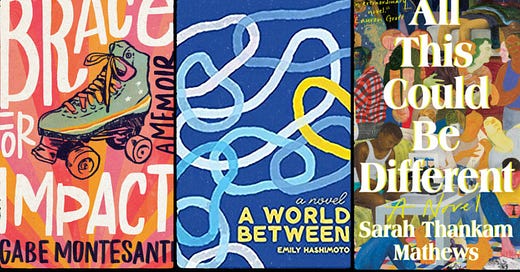



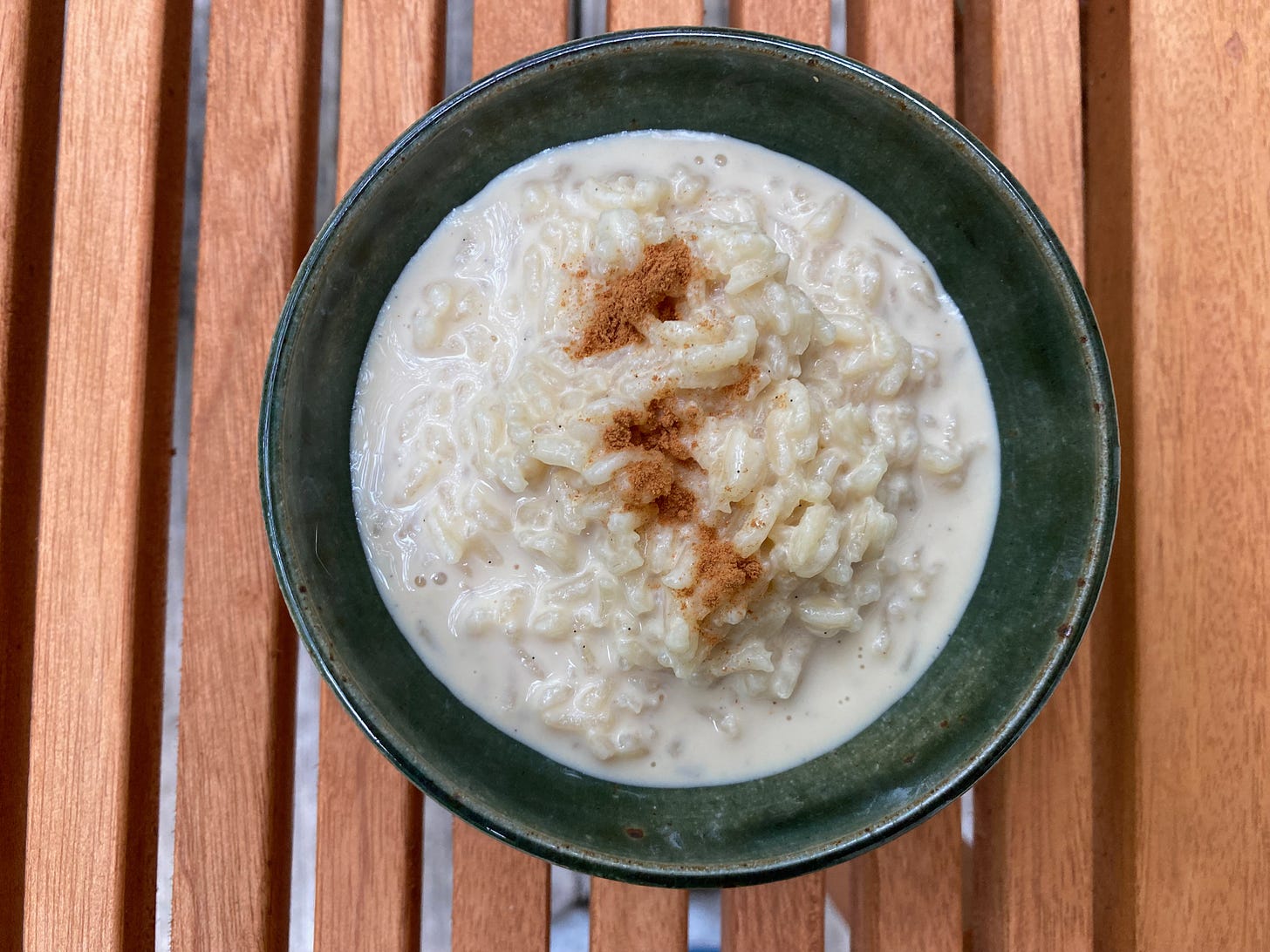
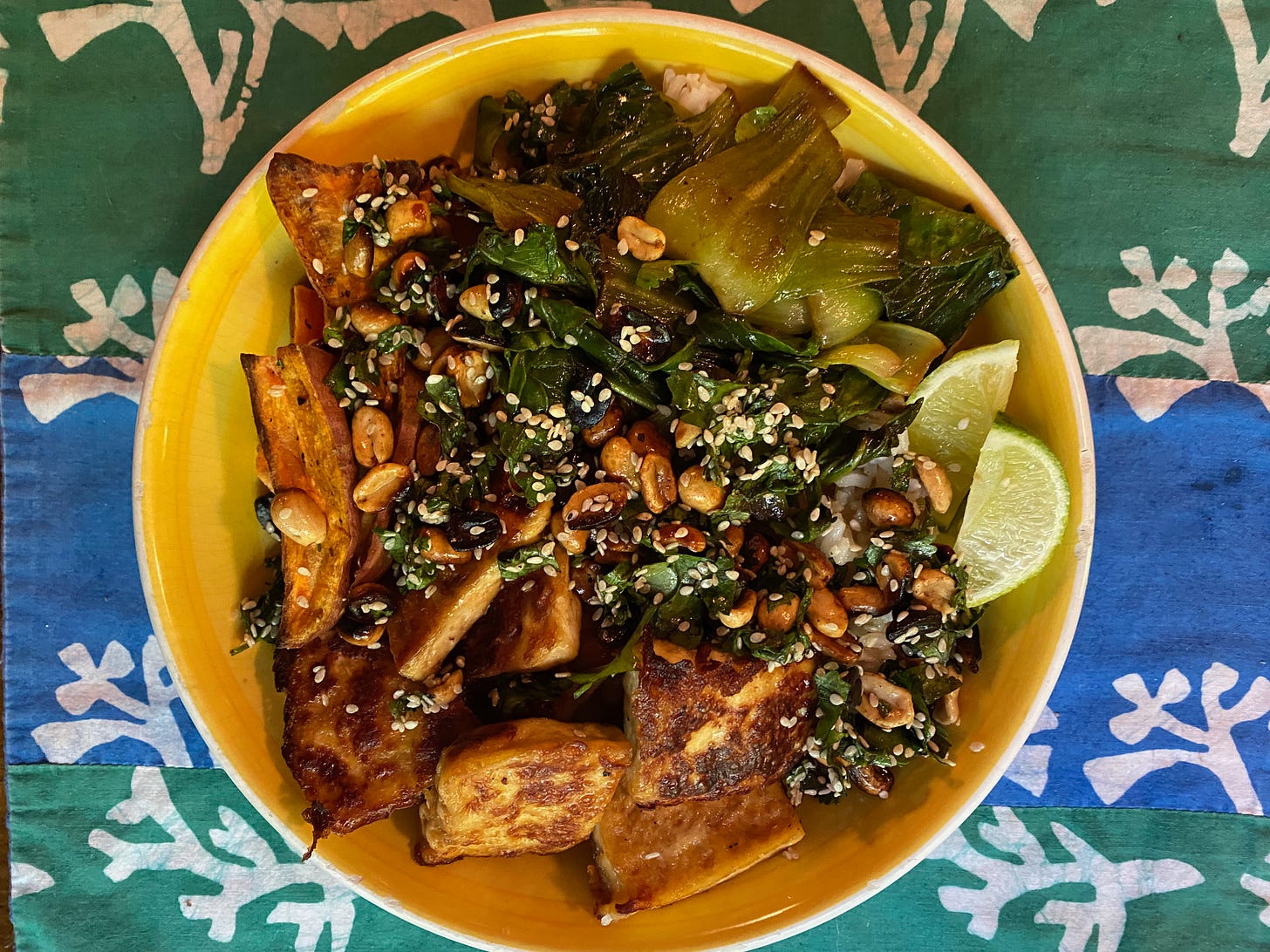
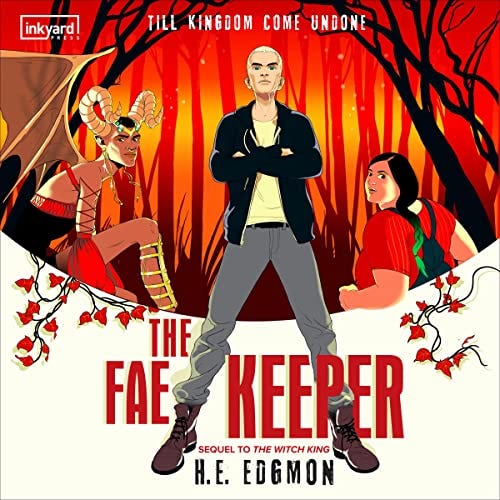
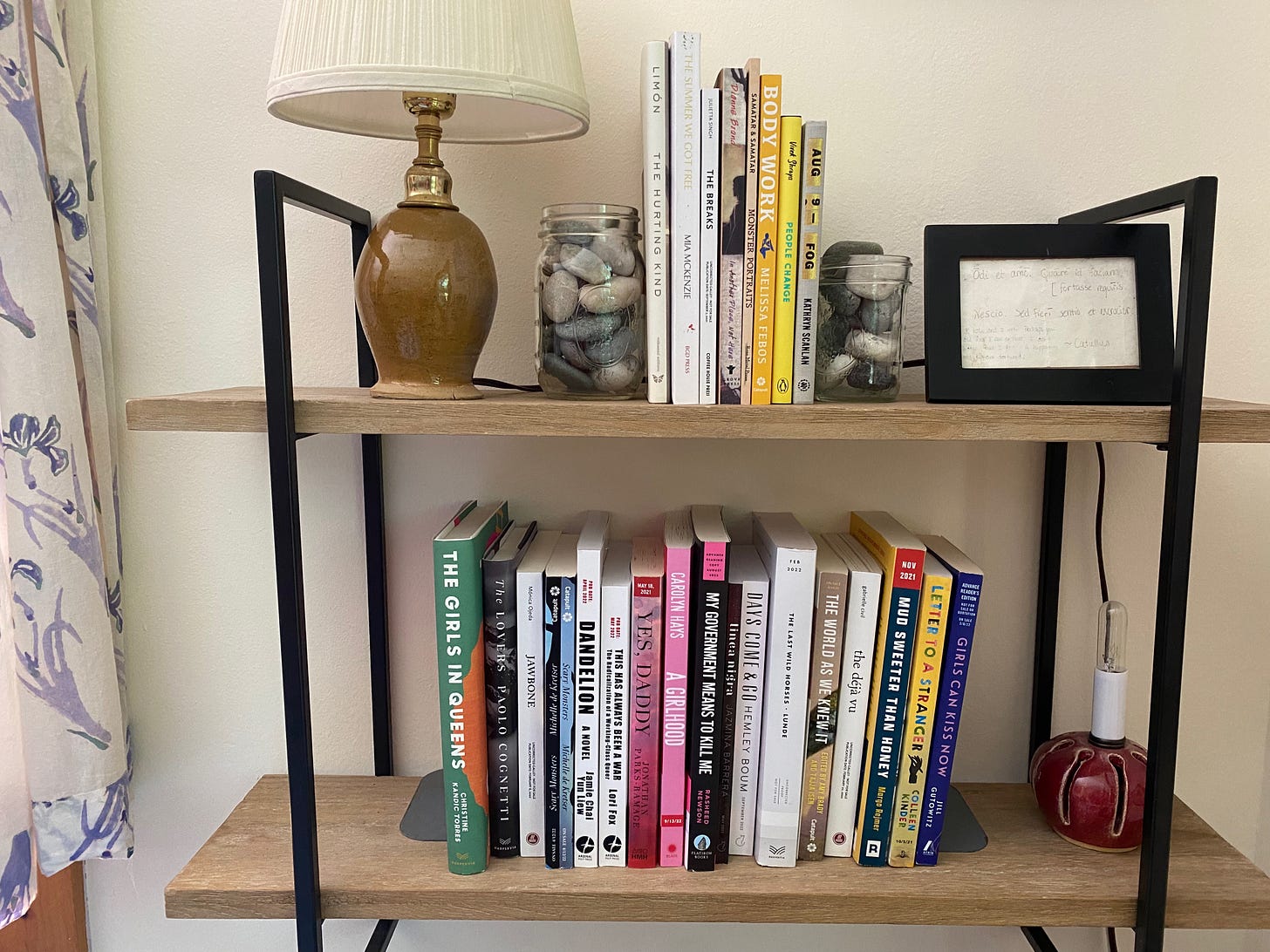
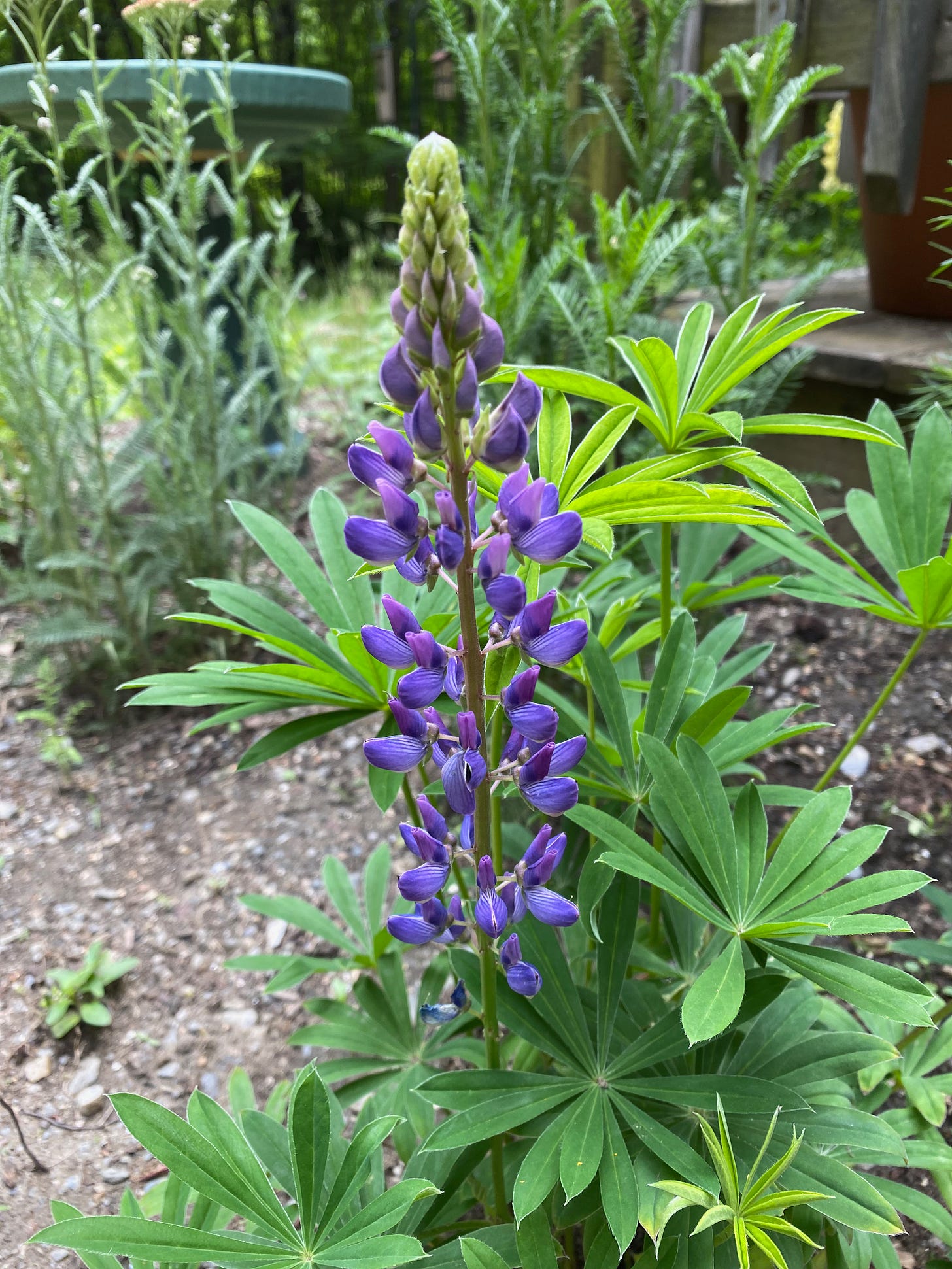
Thanks Laura for the recommendation of All This Could Be Different. I have this book as an ARC but I haven't read it yet; it's moving to the top of my TBR, I can't wait to read it now.